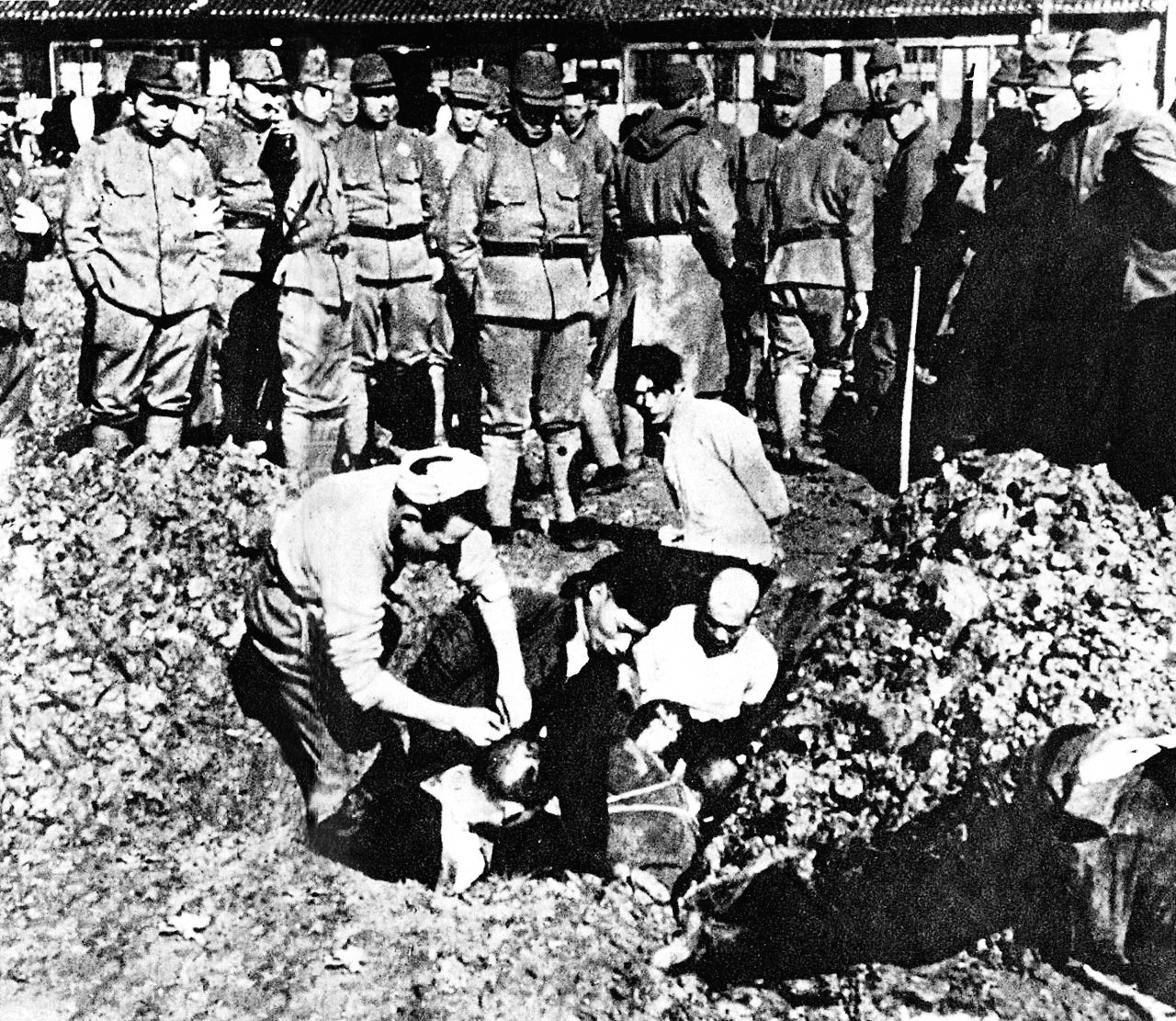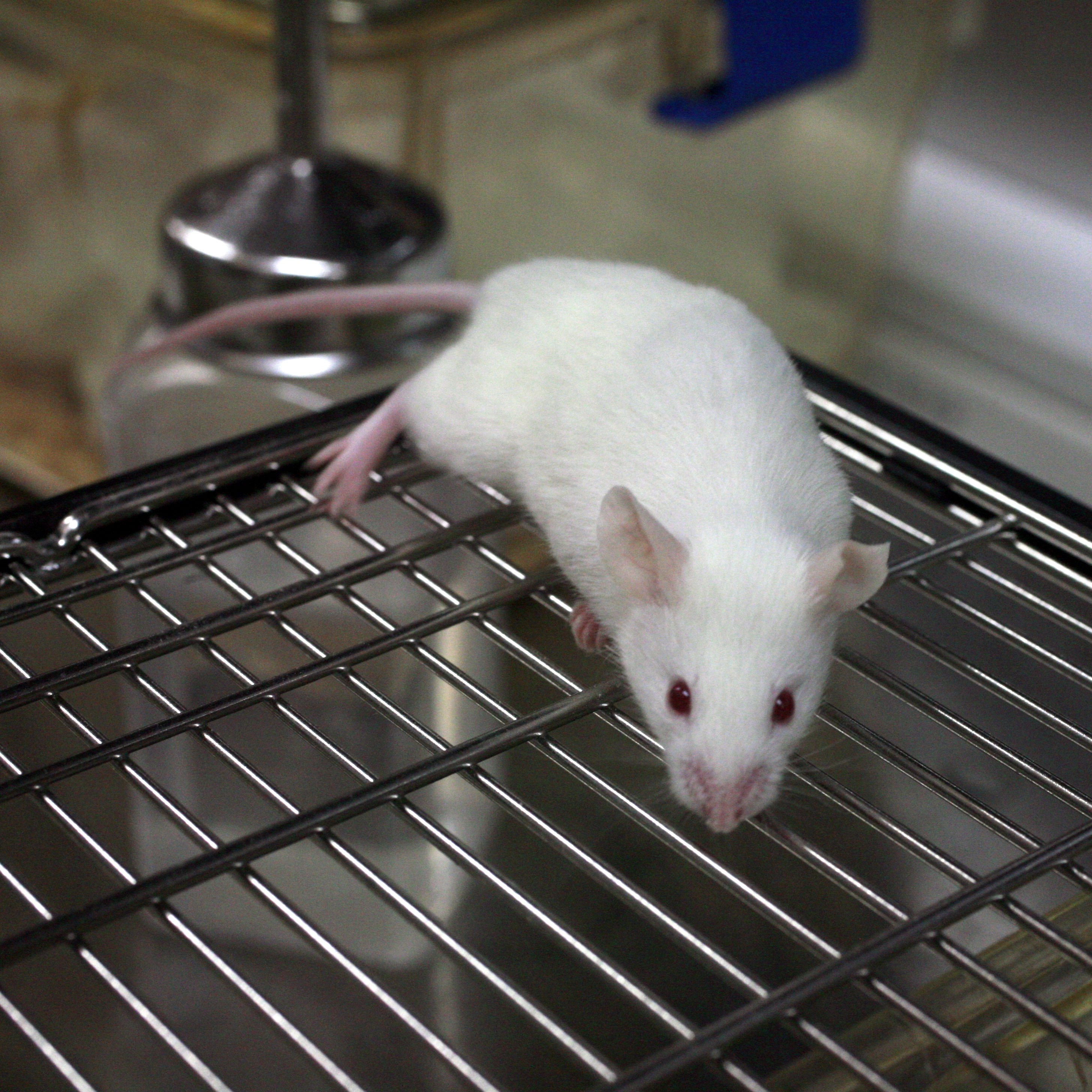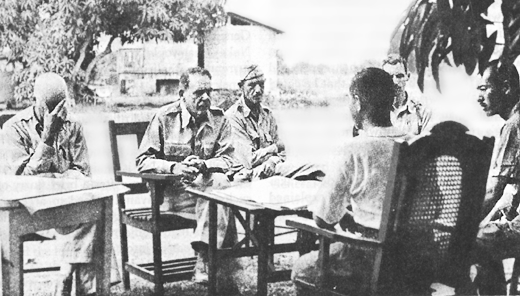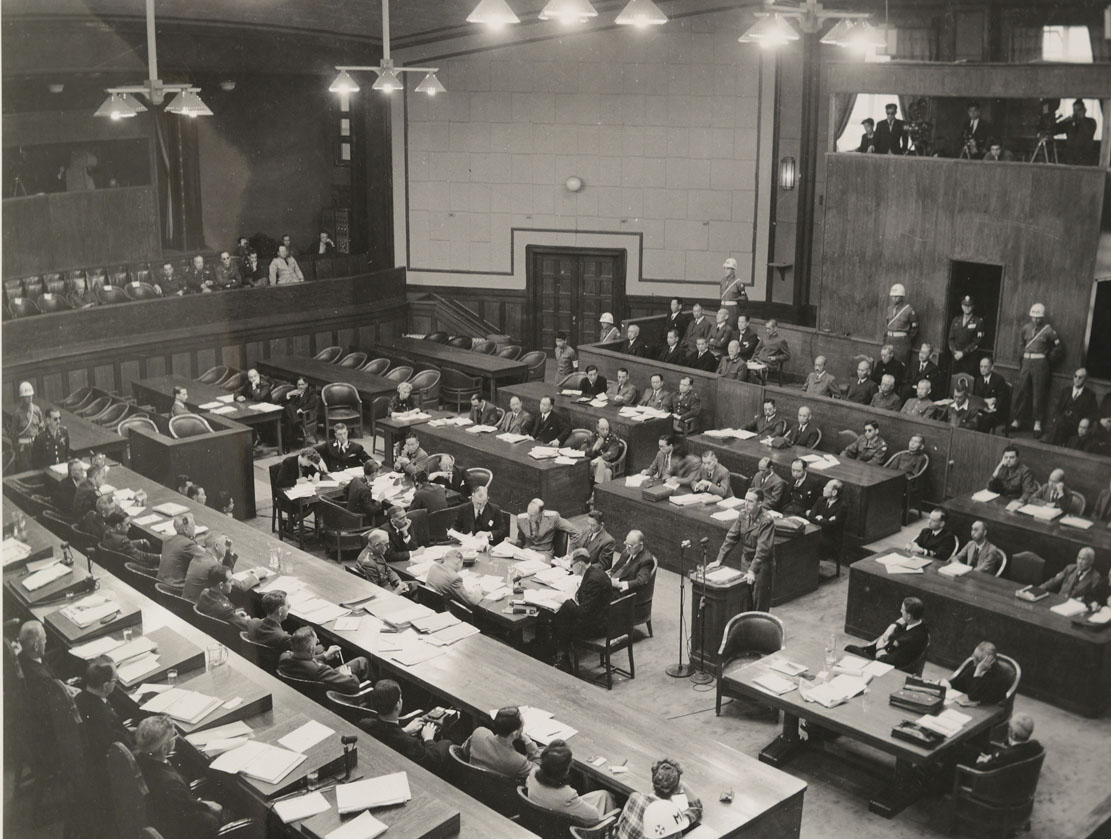|
Yokohama War Crimes Trials
The Yokohama War Crimes Trials was a series of trials of 996 Japanese war criminals The Empire of Japan committed war crimes in many Asian-Pacific countries during the period of Japanese imperialism, primarily during the Second Sino-Japanese and Pacific Wars. These incidents have been described as an "Asian Holocaust". Some w ..., held before the military justice, military commission of the Eighth United States Army, U.S. 8th Army at Yokohama immediately after the Second World War. The defendants belonged to class B and C, as defined by the Tokyo Charter, charter of the International Military Tribunal for the Far East. Of those tried, 854 defendants were convicted, with 124 of them receiving death sentences, of which 51 were carried out. All of the convicts served their sentences or were executed at Sugamo Prison. In 1958, those still serving prison sentences from the trials were all paroled. Notable defendants Captain Kaichi Hirate: Permitted the mistreatment and murder of ... [...More Info...] [...Related Items...] OR: [Wikipedia] [Google] [Baidu] |
Japanese War Crimes
The Empire of Japan committed war crimes in many Asian-Pacific countries during the period of Japanese militarism, Japanese imperialism, primarily during the Second Sino-Japanese War, Second Sino-Japanese and Pacific Wars. These incidents have been described as an "Asian Holocaust". Some war crimes were committed by Japanese military personnel during the late 19th century, but most were committed during the first part of the Shōwa (1926–1989), Shōwa era, the name given to the reign of Emperor of Japan, Emperor Hirohito. Under Emperor Hirohito, the Imperial Japanese Army (IJA) and the Imperial Japanese Navy (IJN) perpetrated numerous war crimes which resulted in the deaths of millions of people. Estimates of the number of deaths range from three to 30 million through Nanjing Massacre, massacres, Unit 731, human experimentation, Vietnamese famine of 1945, starvation, and Slavery in Japan#World War II, forced labor directly perpetrated or condoned by the Japanese military and go ... [...More Info...] [...Related Items...] OR: [Wikipedia] [Google] [Baidu] |
Tasuku Okada
was a Japanese officer during World War II. After the war he was put on trial during the Yokohama War Crimes Trials for ordering executions of captured American aircrew in 1945. Okada was found guilty, sentenced to death, and hanged in 1949. Okada took responsibility for ordering the execution of 38 captured U.S. POWs, after he considered them to be war criminals for the firebombings of Japan. In popular culture The war crimes trial of Okada was depicted in the 2007 film, '' Best Wishes for Tomorrow''. He was played by Makoto Fujita , born Makoto Harada (April 13, 1933 – February 17, 2010), was a Japanese actor. He was born in Ikebukuro, Tokyo, the son of silent-film actor Rintarō Fujima, and started his career as a comedian in 1952. Acting Roles Fujita appeared in b .... Pulvers, Rogerbr>Maj. Gen. Okada: a rare leader who took the blame June 24, 2007'' Japan Times'' Retrieved February 23, 2016 References 1890 births 1949 deaths Japanese mass murderers Ja ... [...More Info...] [...Related Items...] OR: [Wikipedia] [Google] [Baidu] |
Eitaro Uchiyama
was a lieutenant general in the Imperial Japanese Army during World War II. Biography Early career Uchiyama was born in Tokyo as the eldest son of General Uchiyama Kojirō, but was adopted and raised by his uncle. He attended military preparatory schools in Sendai and graduated from the 21st class of the Imperial Japanese Army Academy in 1909 with a speciality in artillery. He graduated from the 32nd class of the Army Staff College in 1920. During his early career, he served in a number of artillery units and became an artillery instructor in 1927. From May 1930, he was sent for further studies in France. In August 1933, after his return to Japan, he was promoted to colonel and given command of the IJA 1st Field Artillery Regiment, and was later commandant of the Field Artillery School. Uchiyama was promoted to major general in August 1937. He subsequently served as commander of the IJA 5th Field Artillery Brigade and the commander of artillery of the Kwantung Army. World W ... [...More Info...] [...Related Items...] OR: [Wikipedia] [Google] [Baidu] |
Allies Of World War II
The Allies, formally referred to as the United Nations from 1942, were an international military coalition formed during the Second World War (1939–1945) to oppose the Axis powers, led by Nazi Germany, Imperial Japan, and Fascist Italy. Its principal members by 1941 were the United Kingdom, United States, Soviet Union, and China. Membership in the Allies varied during the course of the war. When the conflict broke out on 1 September 1939, the Allied coalition consisted of the United Kingdom, France, and Poland, as well as their respective dependencies, such as British India. They were soon joined by the independent dominions of the British Commonwealth: Canada, Australia, New Zealand and South Africa. Consequently, the initial alliance resembled that of the First World War. As Axis forces began invading northern Europe and the Balkans, the Allies added the Netherlands, Belgium, Norway, Greece, and Yugoslavia. The Soviet Union, which initially had a nonaggression pa ... [...More Info...] [...Related Items...] OR: [Wikipedia] [Google] [Baidu] |
Kyushu Imperial University
, abbreviated to , is a Japanese national university located in Fukuoka, on the island of Kyushu. It was the 4th Imperial University in Japan, ranked as 4th in 2020 Times Higher Education Japan University Rankings, one of the top 10 Designated National University and selected as a Top Type university of Top Global University Project by the Japanese government. Kyudai is considered one of the most prestigious research-oriented universities in Japan and is a member of the Alliance of Asian Liberal Arts Universities along with the University of Tokyo, Waseda University, Peking University and others. The history of Kyushu University can be traced back to the medical schools of the Fukuoka Domain (福岡藩 Fukuoka han) established in 1867. The school was reorganized to Fukuoka Medical College of Kyoto Imperial University in 1903 and became independent as Kyushu Imperial University in 1911. Albert Einstein visited the university on December 25, 1922. There are 2,089 foreign stu ... [...More Info...] [...Related Items...] OR: [Wikipedia] [Google] [Baidu] |
Vivisection
Vivisection () is surgery conducted for experimental purposes on a living organism, typically animals with a central nervous system, to view living internal structure. The word is, more broadly, used as a pejorative catch-all term for experimentation on live animalsTansey, E.MReview of ''Vivisection in Historical Perspective by Nicholaas A. Rupke, book reviews, National Center for Biotechnology Information, p. 226. by organizations opposed to animal experimentation,Yarri, Donna''The Ethics of Animal Experimentation: A Critical Analysis and Constructive Christian Proposal, Oxford University Press, 2005, p. 163. but the term is rarely used by practising scientists. Human vivisection, such as live organ harvesting, has been perpetrated as a form of torture. Animal vivisection Research requiring vivisection techniques that cannot be met through other means is often subject to an external ethics review in conception and implementation, and in many jurisdictions use of anesthesia is ... [...More Info...] [...Related Items...] OR: [Wikipedia] [Google] [Baidu] |
Isamu Yokoyama
was a general in the Imperial Japanese Army, commanding Japanese ground forces in China during the Second Sino-Japanese War and Pacific War. Biography Yokoyama was born in Chiba Prefecture as the son of a colonel in the Imperial Japanese Army; however, the Yokoyama clan was originally from what is now Fukushima Prefecture, where they were samurai in service of Aizu Domain. He attended military preparatory schools in Himeji and Osaka and graduated from the 21st class of the Imperial Japanese Army Academy in December 1909. He served with the IJA 3rd Infantry Regiment as a junior officer. He graduated from the 27th class of the Army Staff College in December 1915. In his early career, Yokoyama served in the Imperial Japanese Army General Staff Office and at the Army Ministry. From January 1925 to March 1927 he was assigned as a military attaché to Germany. On his return, he again served in various bureaucratic posts involved in military production and resources planning. After his ... [...More Info...] [...Related Items...] OR: [Wikipedia] [Google] [Baidu] |
Bataan Death March
The Bataan Death March (Filipino: ''Martsa ng Kamatayan sa Bataan''; Spanish: ''Marcha de la muerte de Bataán'' ; Kapampangan: ''Martsa ning Kematayan quing Bataan''; Japanese: バターン死の行進, Hepburn: ''Batān Shi no Kōshin'') was the forcible transfer by the Imperial Japanese Army of between 60,000 and 80,000 American and Filipino prisoners of war from Saysain Point, Bagac, Bataan and Mariveles to Camp O'Donnell, Capas, Tarlac, via San Fernando, Pampanga, the prisoners being forced to march despite many dying on the journey. The transfer began on April 9, 1942, after the three-month Battle of Bataan in the Philippines during World War II. The total distance marched from Mariveles to San Fernando and from the Capas Train Station to Camp O'Donnell is variously reported by differing sources as between . Sources also report widely differing prisoner of war casualties prior to reaching Camp O'Donnell: from 5,000 to 18,000 Filipino deaths and 500 to 650 American death ... [...More Info...] [...Related Items...] OR: [Wikipedia] [Google] [Baidu] |
Kaichi Hirate
Kaichi Hirate (March 12, 1909May 10, 1946) was a Captain in the Japanese Imperial Army. During World War II, he was commandant of the First Branch Camp at Hakodate. In 1946, Hirate was charged with mistreating of prisoners of war resulting in death. He was tried by a U.S. military tribunal at the Yokohama War Crimes Trials The Yokohama War Crimes Trials was a series of trials of 996 Japanese war criminals The Empire of Japan committed war crimes in many Asian-Pacific countries during the period of Japanese imperialism, primarily during the Second Sino-Japanese .... Hirate was found guilty, sentenced to death, and hanged at Sugamo Prison in 1946.Stella Lee Researcher, U.C. Berkeley War Crimes Studies Center, "Case Synopses From Judge Advocate's Reviews: Yokohama Class B and C War Crimes Trials," 2007. References 1909 births 1946 deaths Japanese murderers Imperial Japanese Army officers Japanese military personnel of World War II {{Japan-mil-bio-stub Yokohama tria ... [...More Info...] [...Related Items...] OR: [Wikipedia] [Google] [Baidu] |
Military Justice
Military justice (also military law) is the legal system (bodies of law and procedure) that governs the conduct of the active-duty personnel of the armed forces of a country. In some nation-states, civil law and military law are distinct bodies of law, which respectively govern the conduct of civil society and the conduct of the armed forces; each body of law has specific judicial procedures to enforce the law. Among the legal questions unique to a system of military justice are the practical preservation of good order and discipline, command responsibility, the legality of orders, war-time observation of the code of conduct, and matters of legal precedence concerning civil or military jurisdiction over the civil offenses and the criminal offenses committed by active-duty military personnel. Military justice is different and distinct from martial law, which is the imposition of direct military authority upon a civilian population, in place of the civilian legal system of law ... [...More Info...] [...Related Items...] OR: [Wikipedia] [Google] [Baidu] |
Sugamo Prison
Sugamo Prison (''Sugamo Kōchi-sho'', Kyūjitai: , Shinjitai: ) was a prison in Tokyo, Japan. It was located in the district of Ikebukuro, which is now part of the Toshima ward of Tokyo, Japan. History Sugamo Prison was originally built in 1895, using the prisons of Europe as a model. By the 1930s it became known for housing political prisoners, including many communists and other dissenters who fell foul of the Peace Preservation Laws in the 1930s and 1940s. Allied spies were also incarcerated there, including Richard Sorge who was hanged in the prison on November 7, 1944. The prison also was used to hold captured Allied officers during World War 2 as well as airmen The prison was not damaged during the bombing of Tokyo in World War II, and was taken over by the Allied occupation forces during the occupation of Japan to house suspected war criminals as they awaited trial before the International Military Tribunal for the Far East. After the conclusion of the trials, Suga ... [...More Info...] [...Related Items...] OR: [Wikipedia] [Google] [Baidu] |
International Military Tribunal For The Far East
The International Military Tribunal for the Far East (IMTFE), also known as the Tokyo Trial or the Tokyo War Crimes Tribunal, was a military trial convened on April 29, 1946 to try leaders of the Empire of Japan for crimes against peace, conventional war crimes, and crimes against humanity leading up to and during the Second World War. It was modeled after the International Military Tribunal (IMT) formed several months earlier in Nuremberg, Germany to prosecute senior officials of Nazi Germany. Following Japan's defeat and occupation by the Allies, the Supreme Commander of the Allied Powers, United States General Douglas MacArthur, issued a special proclamation establishing the IMTFE. A charter was drafted to establish the court's composition, jurisdiction, procedures; the crimes were defined based on the Nuremberg charter. The Tokyo War Crimes Tribunal was composed of judges, prosecutors, and staff from eleven countries that had fought against Japan: Australia, Canada, Chin ... [...More Info...] [...Related Items...] OR: [Wikipedia] [Google] [Baidu] |





